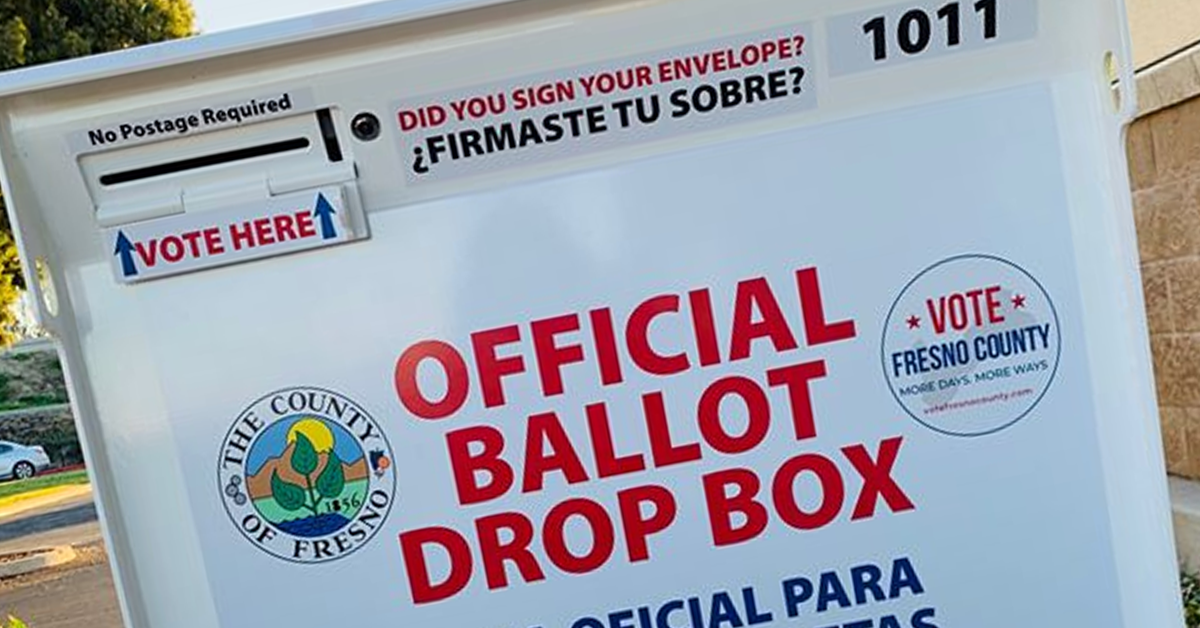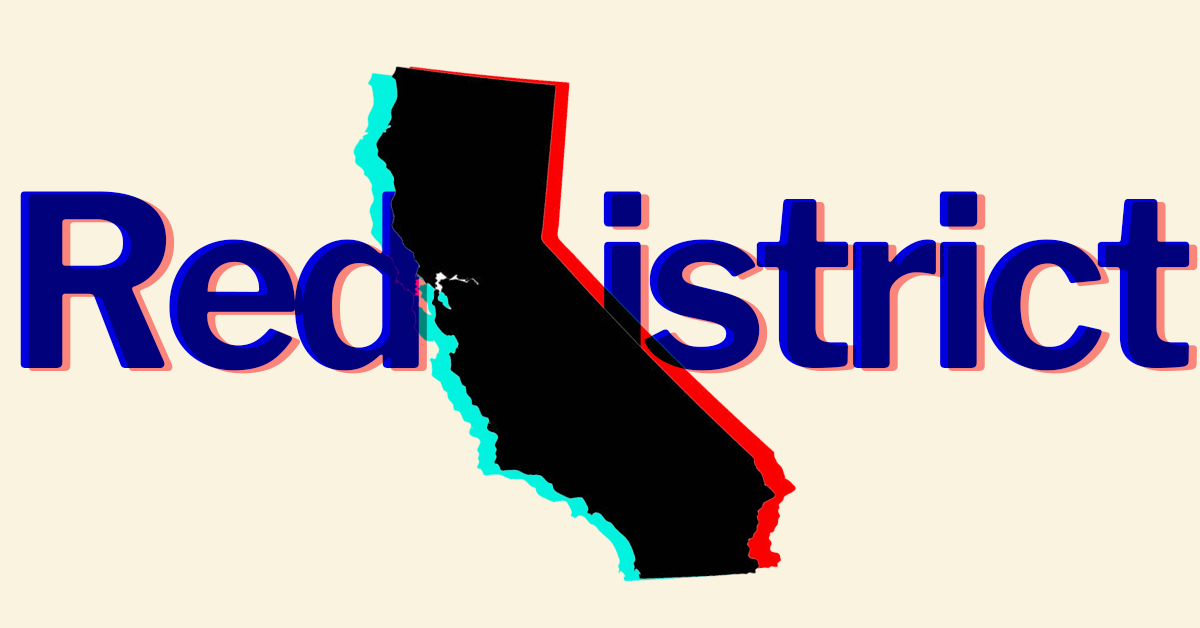Staring down a Dec. 23 deadline, California’s citizen redistricting commission previewed two new Congressional map iterations of the San Joaquin Valley which explore the proposed “arm” through parts of Tulare and Kings counties.
The commission spent the first hour of Wednesday’s meeting working on the Bay Area’s Congressional districts before moving on to continue drawing the State Senate lines.
The commission circled back early in the evening preview the proposed “arm,” which was introduced by Commissioner Sara Sadhwani on Monday.
If either of the two iterations come to pass, the Fresno-Kern district, which House GOP Leader Kevin McCarthy (R–Bakersfield) is expected to seek, would pick up the southern half of Visalia, northeast Tulare, northwest Hanford and Lemoore.
As it stands now, the Fresno-Kern district wraps around west Bakersfield to eastern Kern and Tulare Counties while jutting in to parts of Fresno County.
In turn, the Voting Rights Act Kings-Tulare-Kern and Stanislaus-Fresno districts would see their Latino citizen voting age population (CVAP) majorities strengthened.
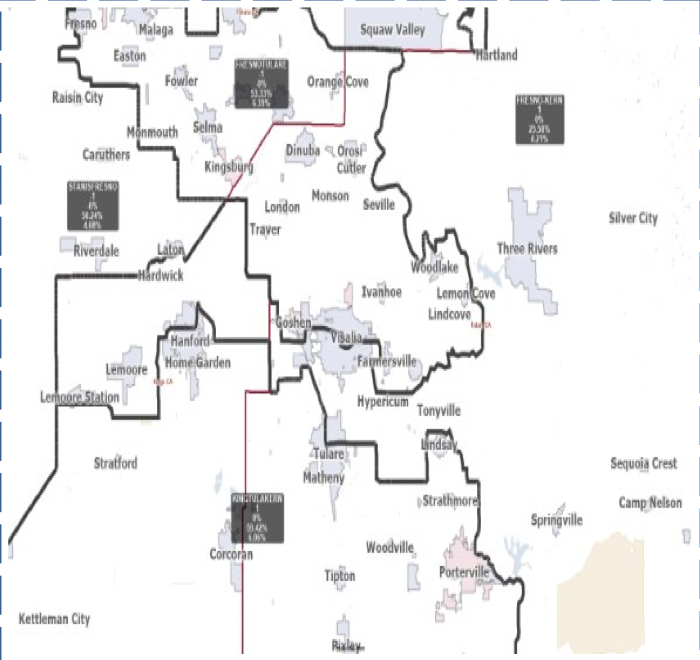
The major difference between the two “arm” variations involves Clovis.
One the map, entitled CV3, shifts most of Clovis and northeast Fresno would land in the ECA district, which spans the Sierra Nevada Mountains and includes Lake Tahoe and Death Valley.
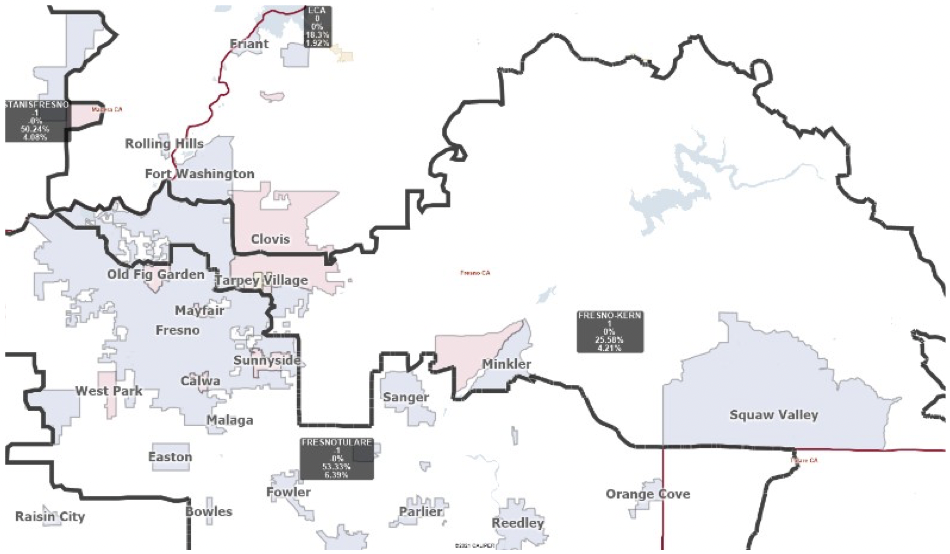
On the other hand, the iteration dubbed “CV4” would place Clovis in the Fresno-Kern district while a vast expanse of north Fresno would find a home in the ECA.
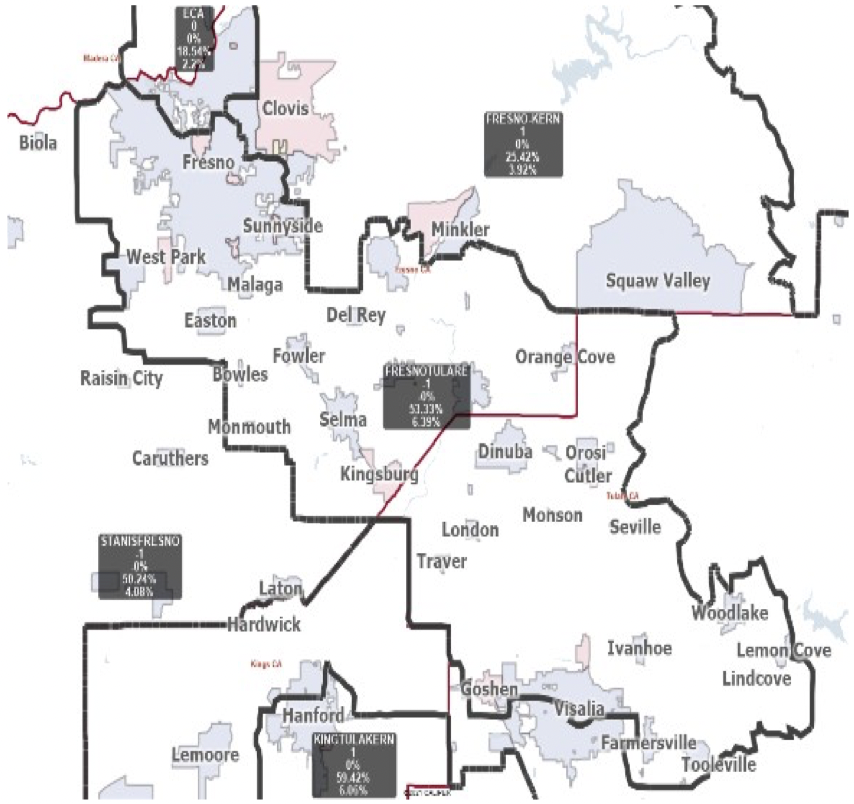
What’s yet to be determined? How the commission will handle the Old Fig Garden neighborhood.
While questions were limited on Wednesday evening, as the panel ran right up to its daily public comment period, commissioners have labored over the historic Fresno neighborhood for several days and would likely continue to debate it if one of the “arm” iterations is implemented.
Wednesday night, much of the feedback from commissioners was muted, mostly focusing on questions of mapping strategy.
The most pointed: why draw a version of the ECA district featuring the entirety of Clovis with no portions of north Fresno?
The answer, provided by co-author Sadhwani, was that Clovis’ 120,000-person population would force an awkward line in the southern edge of Clovis and ultimately maroon neighboring north Fresno into an awkward fit into another VRA district.
The two iterations provide an outlook on the CVAP demographics for the Fresno-based districts.
A population-balanced, non-arm iteration has a Latino CVAP of 58.07 percent in the Kings-Tulare-Kern district and a Latino CVAP of 51.16 percent in the Fresno-Tulare district.
Both CV3 and CV4 would see the Kings-Tulare-Kern district post a 59.42 percent Latino CVAP with Fresno-Tulare coming in at 53.33 percent.
The iterations run extraordinarily close to San Joaquin Valley-centric VRA proposals submitted to the panel by the Mexican American Legal Defense and Education Fund (MALDEF) and backed by the Dolores Huerta Foundation, prompting criticism on Wednesday.
And now in California redistricting… https://t.co/mRFiMMgkE7 pic.twitter.com/TPDFS4JvrC
— Rob Pyers (@rpyers) December 16, 2021





